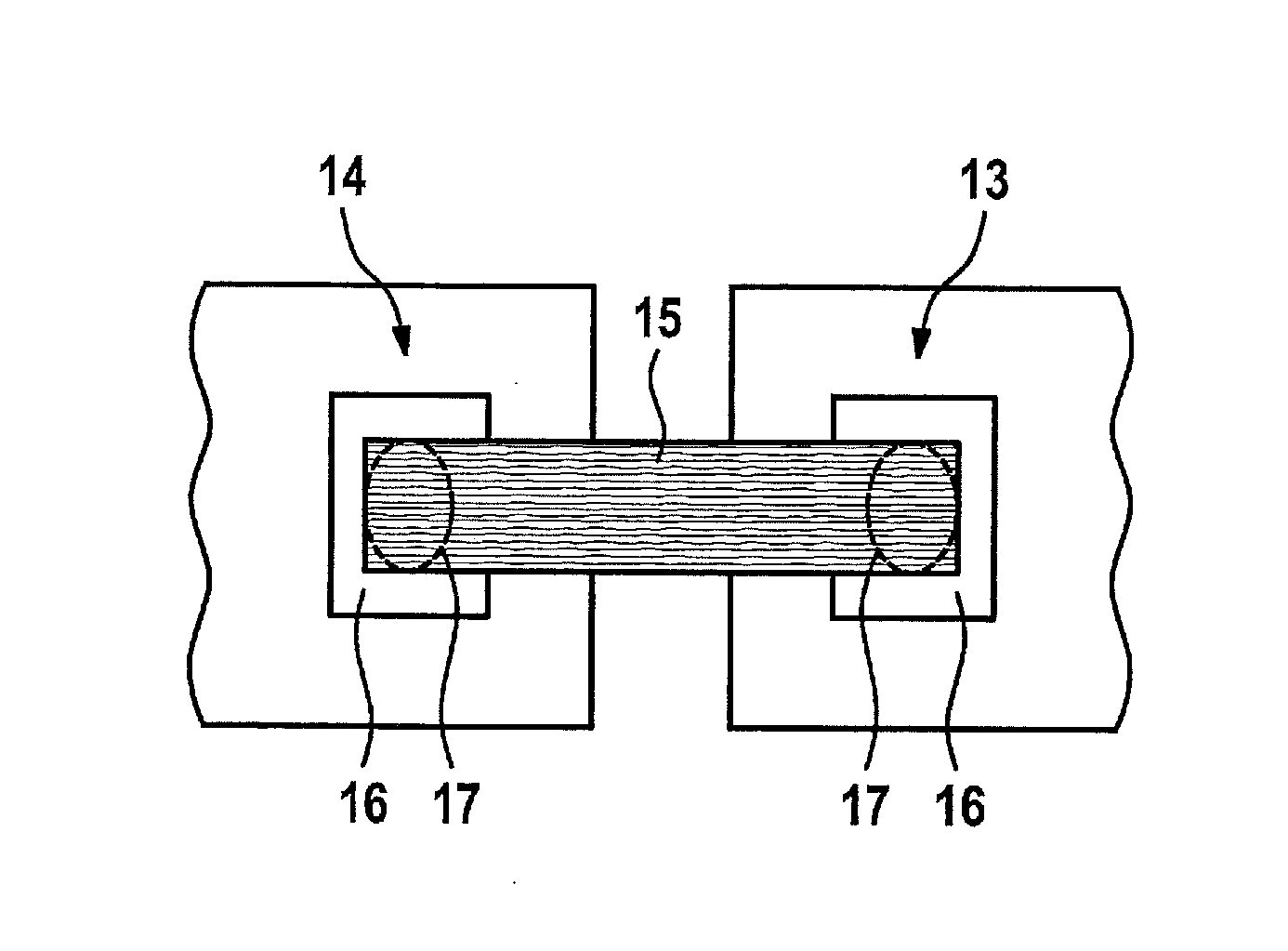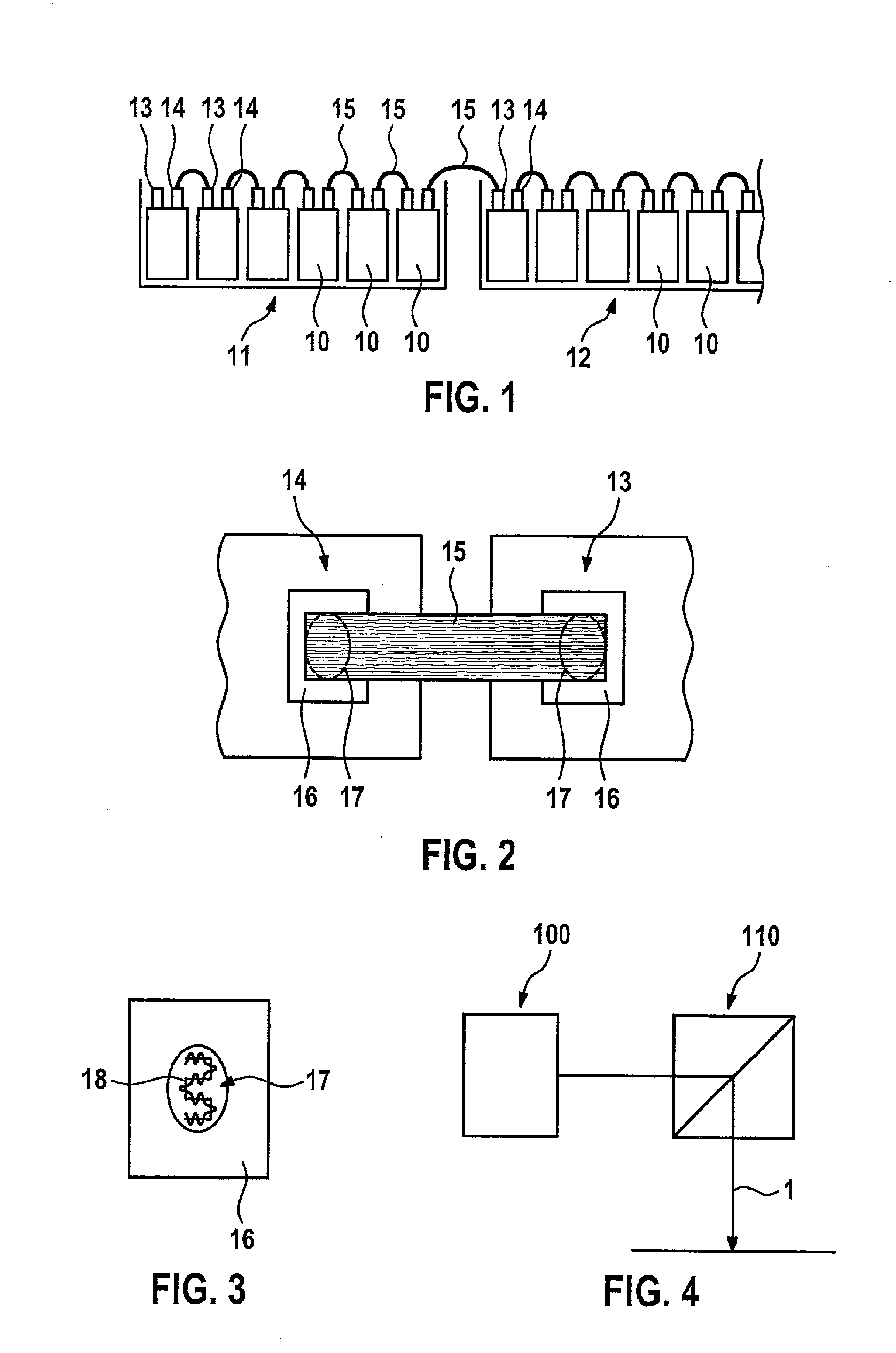Method for connecting poles of battery cells
a battery cell and connecting pole technology, applied in the field of connecting poles of battery cells, can solve the problems of stranded wires that cannot be secured, and achieve the effects of simple and cost-effective connection, good electrical properties, and good electrical properties
- Summary
- Abstract
- Description
- Claims
- Application Information
AI Technical Summary
Benefits of technology
Problems solved by technology
Method used
Image
Examples
Embodiment Construction
[0019]FIG. 1 shows two battery modules 11, 12 situated adjacent to one another as an example, as they may be, but not restrictively, used as a component of a power supply unit in a hybrid vehicle. Of course, it may also be provided that such a power supply unit includes more than two battery modules 11, 12. Each of battery modules 11, 12 contains multiple battery cells 10, which may be configured identically, it being presumed as an example and in simplified form that six battery cells 10 are situated adjacent to one another in battery module 11. In addition, it is explained that such a power supply unit in a hybrid vehicle may include a total of approximately one hundred battery cells 10, which are allocated to corresponding battery modules 11, 12.
[0020]Each battery cell 10 has a positive pole 13 and a negative pole 14. It is presumed as an example that individual battery cells 10 in battery modules 11, 12 are connected to one another in series, i.e., in each case one positive pole...
PUM
| Property | Measurement | Unit |
|---|---|---|
| area | aaaaa | aaaaa |
| power | aaaaa | aaaaa |
| electrical | aaaaa | aaaaa |
Abstract
Description
Claims
Application Information
 Login to View More
Login to View More - R&D
- Intellectual Property
- Life Sciences
- Materials
- Tech Scout
- Unparalleled Data Quality
- Higher Quality Content
- 60% Fewer Hallucinations
Browse by: Latest US Patents, China's latest patents, Technical Efficacy Thesaurus, Application Domain, Technology Topic, Popular Technical Reports.
© 2025 PatSnap. All rights reserved.Legal|Privacy policy|Modern Slavery Act Transparency Statement|Sitemap|About US| Contact US: help@patsnap.com


